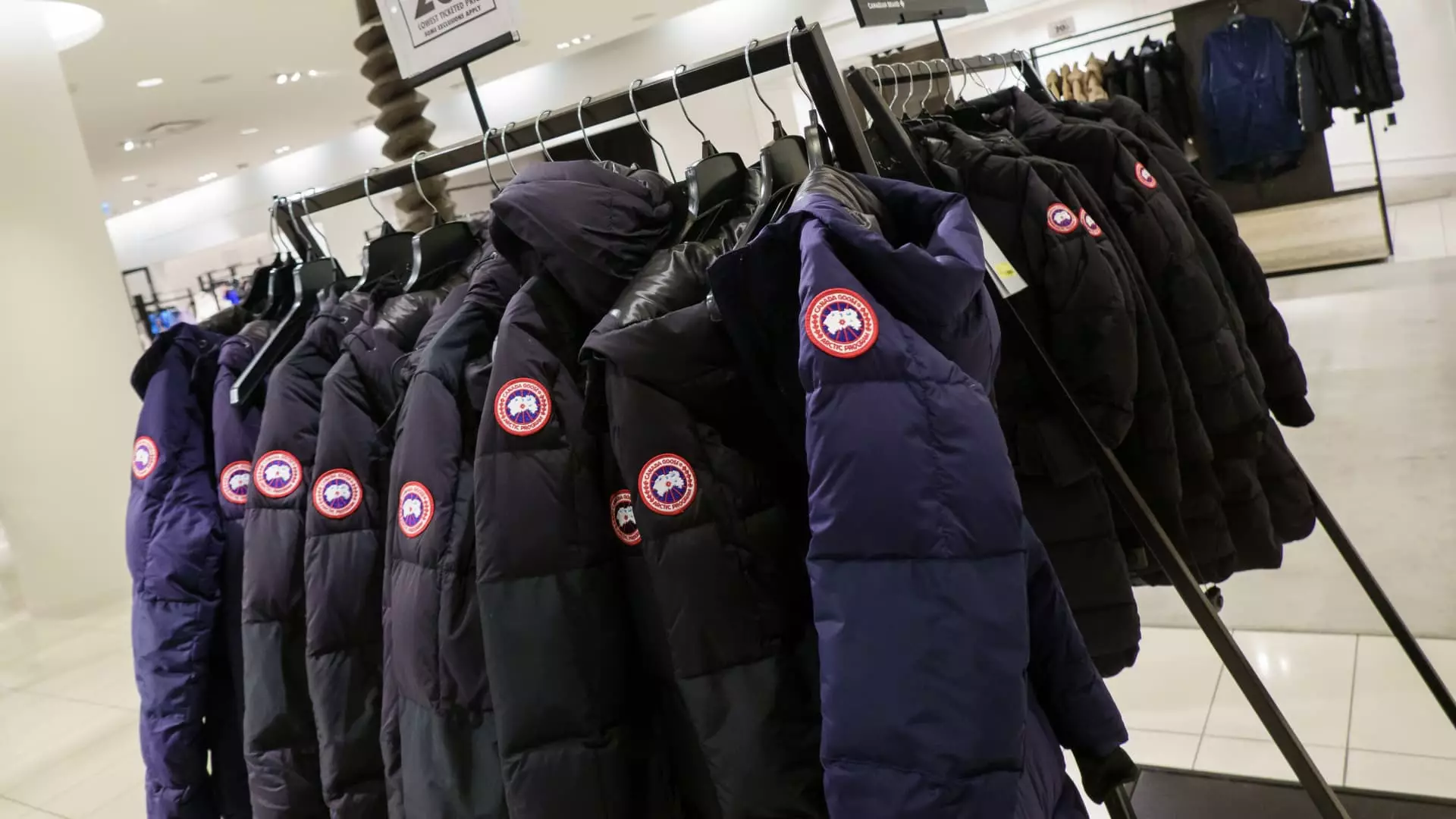In an unexpected twist, Canada Goose’s shares skyrocketed more than 20% this past Wednesday, marking a significant turnaround for the luxury retailer, especially considering the overall tumultuous backdrop in the global economy. The company’s fiscal fourth-quarter earnings outstripped analyst expectations, signaling a resilience that, while commendable, raises questions about the long-term sustainability in the face of volatile market dynamics. This rise in stock does not merely reflect a moment of triumph; it indicates a tenuous balancing act between optimism and stark economic realities that could easily shift.
Uncharted Territory: The Baffling Fiscal 2026 Outlook
Despite the positive earnings report, Canada Goose took an unusual step by withholding its financial outlook for fiscal 2026. This move is laden with implications. The phrase “macroeconomic uncertainty” is a catch-all term that may be masking deeper vulnerabilities within the luxury sector. While management’s assurance regarding the brand’s strength and adaptability might provide short-term comfort to investors, the lack of concrete guidance casts a shadow over the company’s projected path. This decision underscores a profound issue: even in the face of healthy quarterly gains, the winds of global trade uncertainty are turning unfavorable, and that instability could unravel confidence in high-end retail.
Impacts of Tariffs on Production and Pricing
Digging deeper, Canada Goose’s operational structure reveals a complex tapestry woven with threads of geopolitical tension. The COO stated that 75% of its units are produced in Canada, thus largely circumventing the potential impact of tariffs levied by the United States, chiefly due to their compliance with the United States-Mexico-Canada Agreement. This is a strategic advantage; however, the looming threat of increased tariffs on the remaining European production raises significant red flags. The company claims that these tariff constraints will have a “minimal financial impact,” yet such assurances often serve as thin armor against the unpredictable tide of global politics.
Moreover, the ongoing economic landscape calls for more than just optimistic rhetoric. Canada Goose’s prior experience during trying times like the 2008 financial crisis or the COVID-19 pandemic should not be overstated; each challenge breeds its own unique circumstances and ramifications. It is provably easier to survive past disruptions when the economic environment is not simultaneously experiencing multiple headwinds.
Revenue Growth: A Double-Edged Sword
On the surface, the reported revenue growth of 7.4% seems promising, especially when juxtaposed against the prior year’s figures. However, a closer examination reveals a more nuanced reality. Despite net income manifesting as CA$27.1 million for the fourth quarter, contrasted against last year’s paltry CA$5 million, the numbers humbly indicate a recovering position rather than an outright triumph. For a brand rooted in luxury positioning, the ability to sustain growth amid competitor slowdowns, as evidenced by LVMH and Gucci, remains a significant hurdle.
The luxury market is notoriously fickle. With shoppers tightening their belts in austerity-driven economies, Canada Goose’s heavyweight price tags could be perceived as a liability. Indeed, the efforts to branch into non-winter apparel and products, including AI-driven eyewear, might be seen as a desperate attempt to broaden the customer base and counteract seasonal fluctuations. This innovative strive could either prove to be a masterstroke or a folly, depending on market reception.
Building a Year-Round Brand Identity
Canada Goose’s ambition to establish relevance through product expansion is commendable, yet it highlights the pressures that luxury brands face today. The introduction of rain jackets and warm-weather options alongside its high-end parkas signifies a shift toward a diversified offering. The concept of consistently engaging customers, regardless of weather, is undoubtedly appealing in an attempt to cultivate a year-round brand identity.
However, the question remains: is there a risk of diluting the brand’s perception? Attempting to cater to all seasons while maintaining exclusivity can be a precarious balancing act. Canada Goose must navigate these waters carefully, ensuring its luxury appeal does not become muddied in a quest for wider market reach.
While Canada Goose’s recent stock surge depicted optimism, the underlying challenges posed by macroeconomic uncertainties and market competition urge a careful reevaluation of long-term strategy and brand positioning. The journey ahead may be paved with opportunities, but it is equally fraught with peril.

